Java is widely used and is a popular programming language. The number of Java developers in the IT industry is above 8 million. Developers proficient in Java are in high demand. It takes effort and time to become proficient with Java, which takes time to learn. The question of how much time it takes to learn Java is usually difficult to answer. The reason is that only some have the same physical abilities or intellectual potential.
Java has a wide range of applications and opens several doors for IT professionals. Everyone wants to pick up Java programming as quickly as possible, yet it is a challenging language to master. Practice with fundamental and advanced concepts is the only way to become an expert Java developer.
The question is, how long does it take to learn Java? Does it take ten months, ten weeks, or a day? Maybe the rest of your life? Some online forums may have strange answers to this question. Let us find the answer in this blog.
Let’s begin by understanding why we should learn Java.
Why study Java?
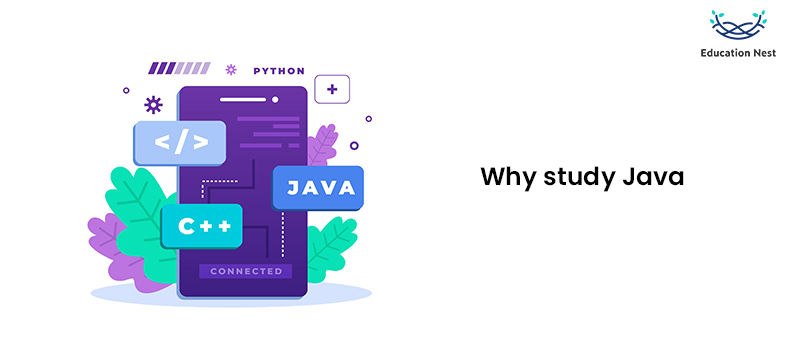
The first step in learning Java is determining why you want to do so.
Why not expand your programming skills by learning Java, even if you already know how to use other languages? As you learn a new programming language, you’ll have the chance to grow as a person and professional.
Java is a lucrative programming language, and Java programmers can expect to earn a good living wage. It would help if you were paid more, which is another possible explanation.
To learn effectively, you need a reason to do so, but you also need a reason to care. There is a lot of work involved in learning a new programming language. It’s not easy, so if you aren’t invested in the subject matter, you may want to rethink spending the time and energy required to study.
You must have a sincere interest in learning if you’re still reading this.
Now, let’s move forward and discover how many days are required to learn Java.
If we follow a specific course of study, we can master Java in only one month.
Start with the Basics on Days 1 and 2
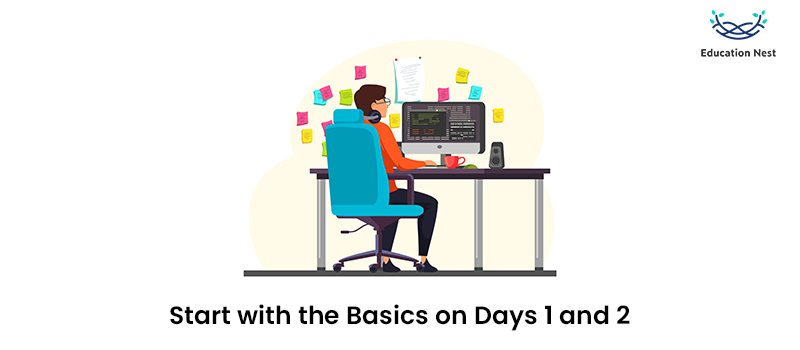
If we want to start programming in Java or any other language, we need to make sure we know how the language works. There is a lot of background information about the Java language, features, applications, etc., that has to be mastered before we can go into the principal notion. Then we should be able to figure out how to install the Java runtime. The classic “Hello World” program should also be written, compiled, and run in Java. In addition to learning Java, we must investigate the available integrated development environments (IDEs).
Days 3-5 for Studying Variables, Data Types, and Conditional Statements
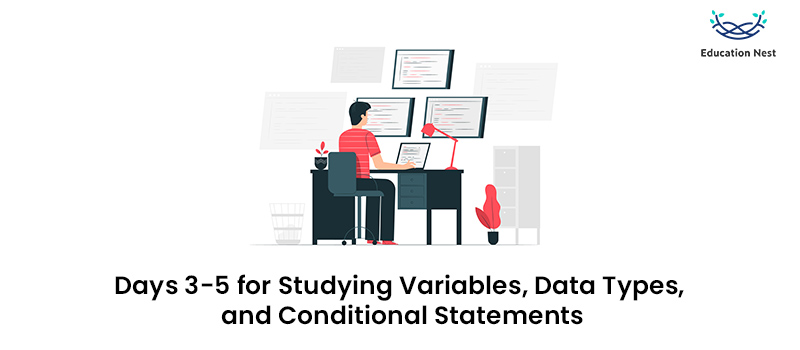
Now that we have a firm grasp of Java’s foundational concepts, we may move on to more advanced topics. Some fundamentals of Java-like programming are required, like:
- DataTypes
- Variables
- Conditional Statements
These ideas form the basis of all programming languages. It is expected that we will learn the following:
- Variety of Java data formats.
- When and how Java variables are declared and initialised.
- To what end do conditional statements serve, and how do we put them into practice?
- What kind of operators and modifiers are available in Java, and how are they used?
- The statements that perform looping, such as for loop.
Day 6-8: Learn how to work with arrays, Array List, and strings
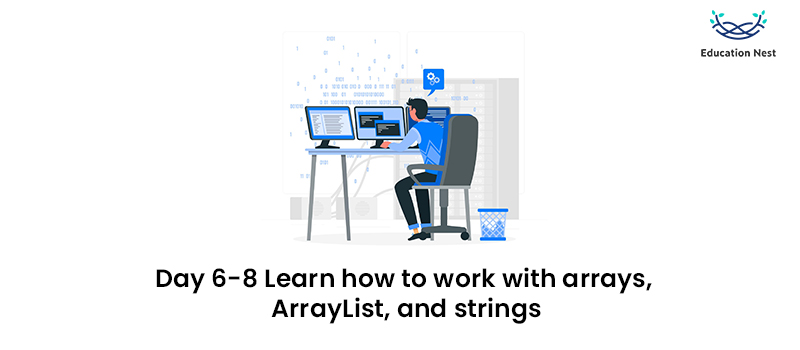
Now that we have a firm grasp of the fundamentals, we may move on to more sophisticated Java programming principles. A Java programmer must be well-versed in both String and Array. Currently, we must educate ourselves on the following:
- Strings
- What is an array? How do you make one in Java?
- Learning how to extract the components from it is also necessary.
- The extent of potential changes.
- Specifically, how do we go about converting types in Java?
- Why would you use a switch statement?
Day 9–12: Learn about objects, classes, and methods
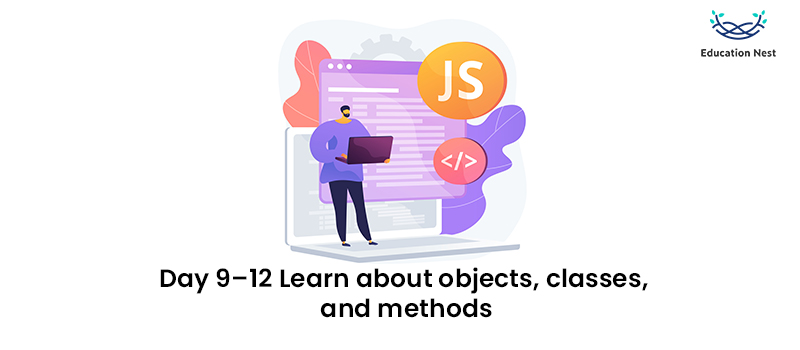
After we’ve learned all the above, we’ll have a solid foundation for learning any programming language. Now that we understand that Java is OOPs-compliant, we can focus on clarifying its fundamental building blocks. All of the following questions need to be answered.
- How can we make our Objects and Classes in Java?
- How can we make our own Java methods, and what are they?
- What are Java Overloading and Overriding?
- How can the parameters be passed in Java?
- Where do constructors come into play in Java, and what exactly are they?
You Must Watch: A List of Data Science Tools You Must Know About
Explore advanced OOPs principles on days 13–16
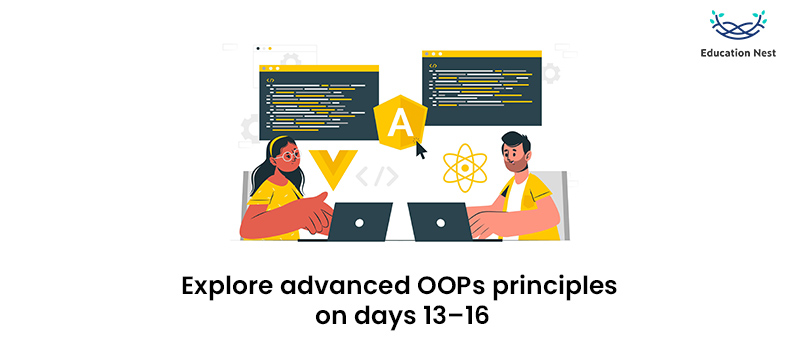
At this point, we can start learning the fundamentals of Java programming. We should now have a solid grounding in classes, objects, and methods. Java is based on the OOP principles of polymorphism, encapsulation, inheritance, and abstraction. Therefore, mastery of these ideas is necessary for learning Java. In only two days, we will need to master the following concepts.
- Inheritance
- Polymorphism or the Runtime Polymorphism and Polymorphism at Compile-Time
- Abstraction
- Encapsulation
- Alternate combinations of words, such as This and Super
- Composition
- Aggregation
- Association
Interfaces and Packages: Days 17 to 20
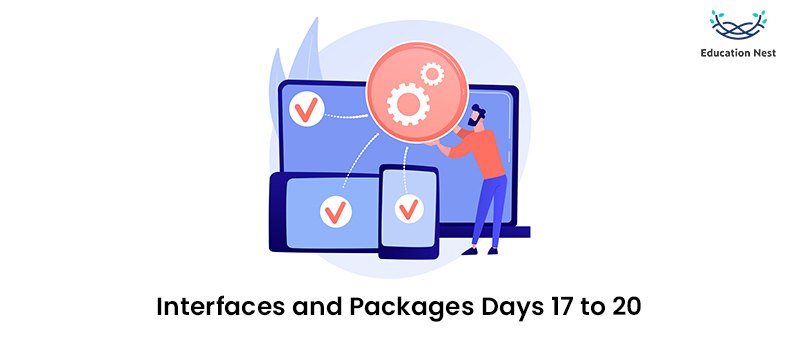
Now that we have a firm grasp of the abovementioned ideas, we can take the next logical step. Package, Interface, Clustered Interfaces, and Generic Classes are all topics we need to cover in the next four days. In Java, you’ll often use many packages, including Java.Lang, Java.Time, and Java.Math.
Each abstract method must be defined to write code that fits an interface. We’ll need a firm grasp of interfaces, abstract classes, and their associated processes. Therefore, at the end of the session, the following ideas should be understood:
- Package
- Interface
- Abstraction in Class Structure and Procedure
- Nesting Interface
- Packages of Time, Language, Mathematics, and Others
Day 21–25: Handling exceptions, threads, multithreading, and I/O streams
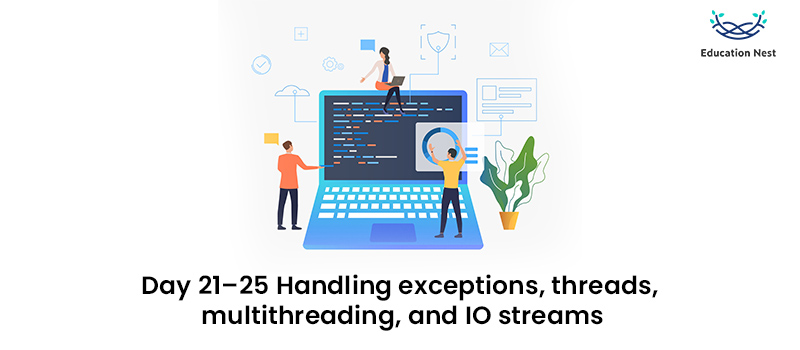
Error-free execution of our software is not achievable. Whenever we run our code, we risk encountering some mistakes. This means that our programs need error handling to run after an error occurs. We are also familiar with Java’s File API and its usage of regular expressions. In addition, we need to familiarise ourselves with Java’s threading and multithreading notions.
Finally, therefore, here are some ideas we should be familiar with:
- Superb Control
- Different Exceptions
- Concept of a Thread
- Multithreading
- The Meaning of a Term That Has a Regular Expression
- The Processing of Documents
Day 26 to 30: Collection Framework, AWT, and Swings
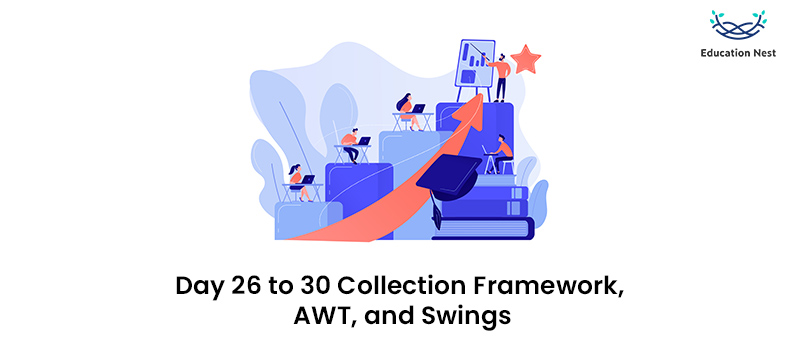
Before moving on, it is essential to emphasise the practical application of the abovementioned principles and their academic understanding. After that, we’ll be all set to learn the finer points of more complex ideas. Java’s three most important new ideas are the Collection Framework, the Generic Window Toolkit, and Swings. The Collection Framework sets up a lot of classes and interfaces so that a group of objects can be treated as a single thing. As a result, here are some ideas we should be familiar with:
- Java’s Collections
- A Swing Application Written in Java
- Generics
- AWT
After a month, we will only be able to train. Also, by working on manageable tasks, we can see firsthand how many ideas come together to form a whole.
After reading this blog, I hope the answer to the question “How long does it take to learn Java?” is clear. There needs to be a precisely defined time to learn Java. You can apply for courses and master Java by practicing regularly.
